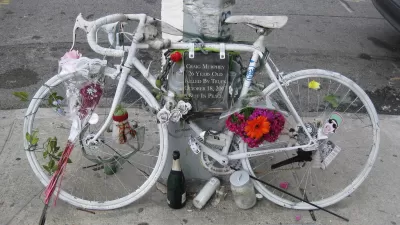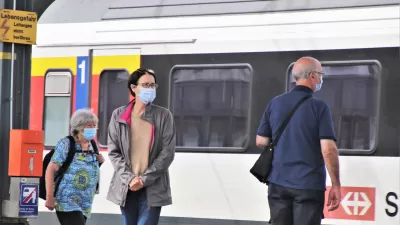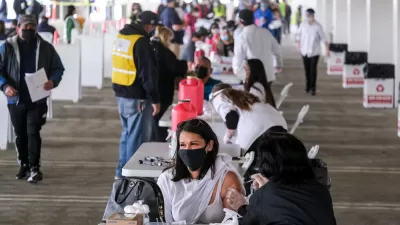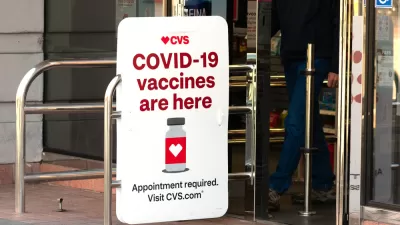There's good and bad news to report from the 37-year study. Good news: Decreased child fatal bike crashes, but it results from fewer children biking. Bad news: Increased adult fatal crashes, but it results from an increase in adult male cyclists.

"This report examines mortality trends among cyclists using national collision data from the Fatality Analysis Reporting System (FARS) for the period 1975–2012," as published in the U.S. Centers for Disease Control and Prevention's Morbidity and Mortality Weekly Report (MMWR).
"The researchers pointed out that the profile of the typical bike rider has changed a lot during that time, with fewer kids riding a bicycle every day and more adults -- especially men -- doing so," writes E.J. Mundel for HealthDay News.
Recent years have seen the largest increase in bicycling [among adults]," the authors wrote. "For instance, during 2000-2012, the number of U.S. workers who traveled to work by bicycle increased 61 percent," they said.
Most of that growth occurred among men aged 25 to 64. In the meantime, "cycling rates have remained steady for women and have fallen among children," [the researchers] said.
Aside from the growth among adult male cyclists, decrease among children cyclists, and no-change in female adult cyclists, here were some factoids from the report:
- On a per-trip basis, bicyclists die on U.S. roads at a rate double that of vehicle occupants
- Bicycles account for only about 1% of trips across all modes of transportation
- Report has a table showing the "average annual age-adjusted cyclist mortality rates, by state (except for Alaska and Hawaii) for 1975–1979 and 2008–2012"
The study, led by Dr. Jason Vargo, an assistant scientist with the Global Health Institute and the Nelson Institute for Environmental Studies of the University of Wisconsin-Madison, "points to the need for 'expanding traditional road safety interventions' -- which have typically focused on motor vehicles -- to focus on the safety of bicyclists, as well, the report's authors said," concludes Mundel.
So how can biking be made safer for all Americans? The report's authors said tried-and-true methods have already been successful in bringing overall death rates down. These include improvements in "road design and engineering, traffic law enforcement, driver and bicyclist behavior, helmet use, and traffic volume," they wrote.
The research team noted that many "bike-friendly" U.S. cities have already launched successful interventions, initiatives such as: dedicated bike lanes that are physically separated from car traffic; lowered speed limits; more speed bumps; and better education on safer bike/motorist behaviors.
Hopefully local transportation departments and transportation policy leaders will utilize the findings of this CDC report to make roads safer for cycling so as to decrease crashes and just as importantly, increase cycling among children and women.
Hat tip to AASHTO Daily Transportation Update
FULL STORY: U.S. Bike Deaths Fall for Kids, But Rise for Adults

Planetizen Federal Action Tracker
A weekly monitor of how Trump’s orders and actions are impacting planners and planning in America.

Restaurant Patios Were a Pandemic Win — Why Were They so Hard to Keep?
Social distancing requirements and changes in travel patterns prompted cities to pilot new uses for street and sidewalk space. Then it got complicated.

Maui's Vacation Rental Debate Turns Ugly
Verbal attacks, misinformation campaigns and fistfights plague a high-stakes debate to convert thousands of vacation rentals into long-term housing.

In California Battle of Housing vs. Environment, Housing Just Won
A new state law significantly limits the power of CEQA, an environmental review law that served as a powerful tool for blocking new development.

Boulder Eliminates Parking Minimums Citywide
Officials estimate the cost of building a single underground parking space at up to $100,000.

Orange County, Florida Adopts Largest US “Sprawl Repair” Code
The ‘Orange Code’ seeks to rectify decades of sprawl-inducing, car-oriented development.
Urban Design for Planners 1: Software Tools
This six-course series explores essential urban design concepts using open source software and equips planners with the tools they need to participate fully in the urban design process.
Planning for Universal Design
Learn the tools for implementing Universal Design in planning regulations.
Heyer Gruel & Associates PA
JM Goldson LLC
Custer County Colorado
City of Camden Redevelopment Agency
City of Astoria
Transportation Research & Education Center (TREC) at Portland State University
Jefferson Parish Government
Camden Redevelopment Agency
City of Claremont





























